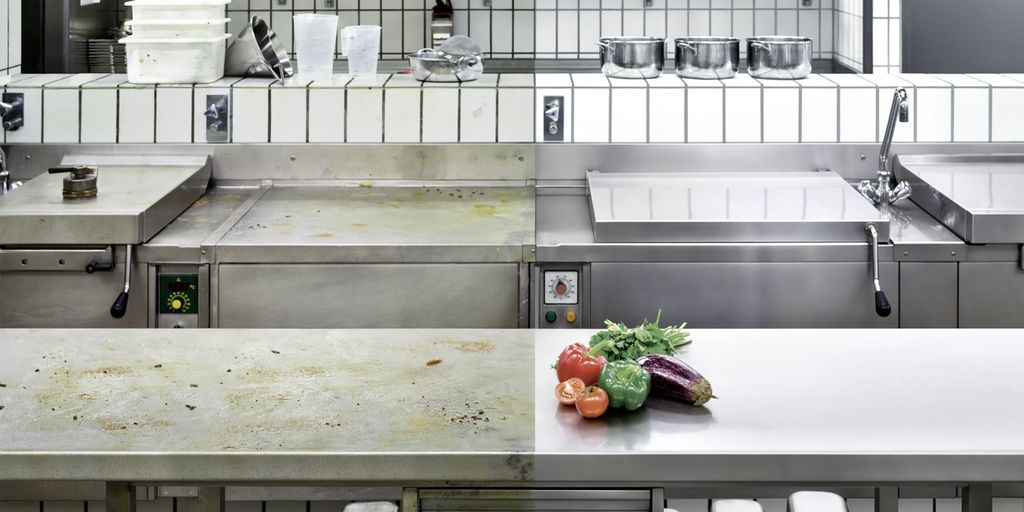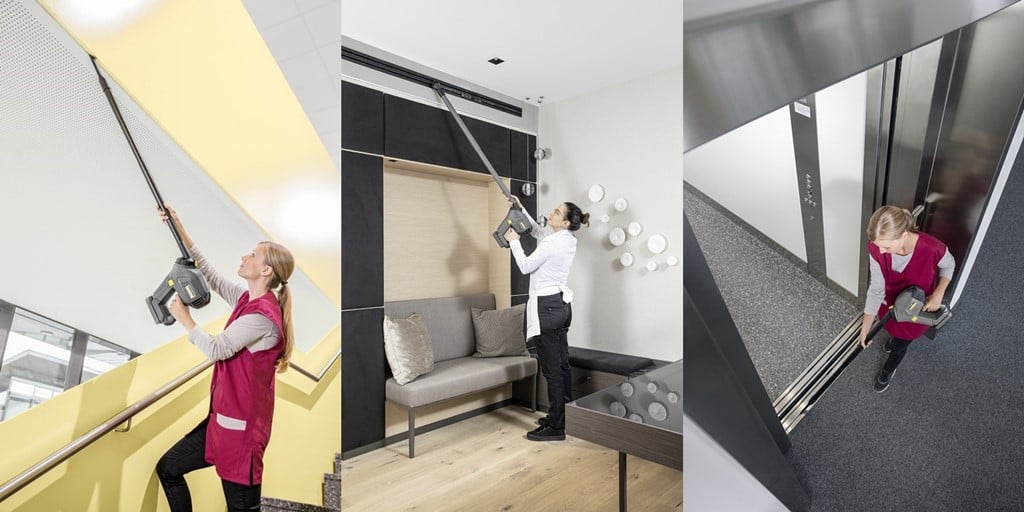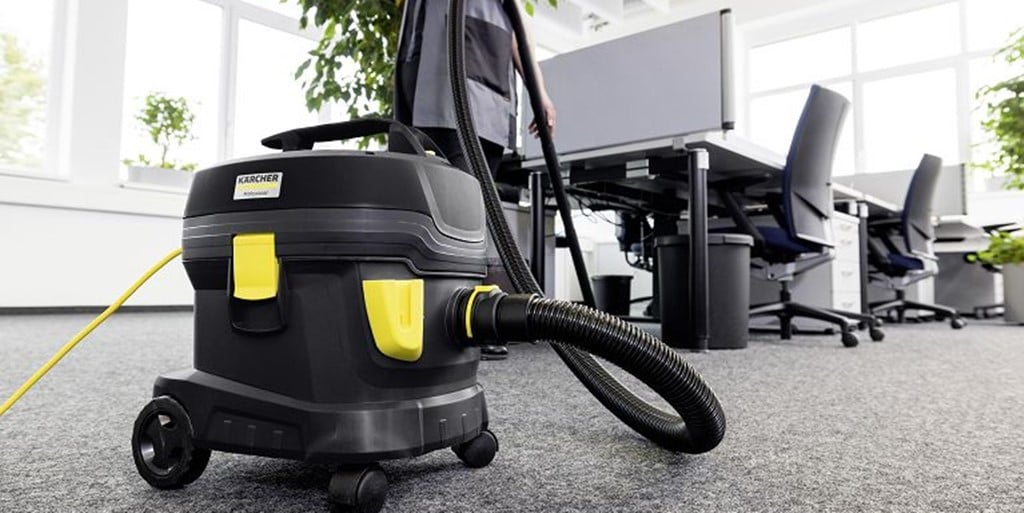Cleaning in a commercial kitchen. Cleanliness and hygiene for walls, tiles and equipment.
Cleaning in a commercial kitchen
Wherever food is cooked, there will be stubborn stains. Grease and food residues must be systematically removed in accordance with the HACCP guidelines, in order to eliminate the breeding grounds for viruses and bacteria. With the right equipment, commercial kitchens can be thoroughly and efficiently cleaned and disinfected.
Cleaning and disinfection in accordance with HACCP
In order to produce hygienically safe food, the kitchen and associated rooms (storage rooms, refrigeration facilities) and the available machines must be kept clean through careful cleaning and disinfection, where appropriate. As the various areas and machines have different cleaning intervals, a cleaning schedule must be created and displayed and clearly documented by signature to allow monitoring.
Work up a lather: The walls
Bright tiles and stainless steel characterize the appearance of commercial kitchens. To clean the tiles at the end of a working day, high-pressure cleaners can be used in combination with foam nozzles or cup foam lances. With the aid of the appropriate foam cleaning agents (alkaline/neutral/acidic) and air, which is added at the nozzle, the tools generate foam with the high-pressure jet. The foam is applied from a distance of about one to two meters, working from bottom to top, to make use of the large ejection width.
Gently, or with steam:
Cleaning tilting frying pans requires high-pressure cleaners which allow the user to control the water pressure and quantity via the high-pressure gun. This makes it possible to always work with the appropriate combination, without the dirt splashing back onto the user.
You can also make machines and kitchen utensils reach the required hygiene levels using steam cleaners or better steam-vacuum cleaner. The steam exits the nozzle in very fine droplets at a temperature of 100 °C and a pressure of 3 to 4 bar. This means that the steam gets into every crevice and rubber fold that a brush or cloth would struggle to reach. This allows thorough and hygienic cleaning of the edges of dishwasher front panels, the on and off switches on cookers and grooved surfaces.
A particular challenge: The floor
The floor of a commercial kitchen is a particular challenge. The structured tiles also have displacement nubs so that water does not create a risk of slipping. Grease and food residue deposited throughout the working day gets caught between these nubs.
Alongside the surface cleaner with a rotating nozzle bar, to which power nozzles are attached in a slightly offset , scrubbers or scrubber driers in the single-disc or roller version, are suitable for floor cleaning. On rough floors, single-disc machines require a high degree of effort as the disc drifts to the right and the user has to continually steer against this. However, roller machines work with counter-rotating rollers; they therefore have neutral movement and are significantly easier to guide. Thanks to the suction bars the floor dries and can be walked on again immediately. Efficient and safe.







